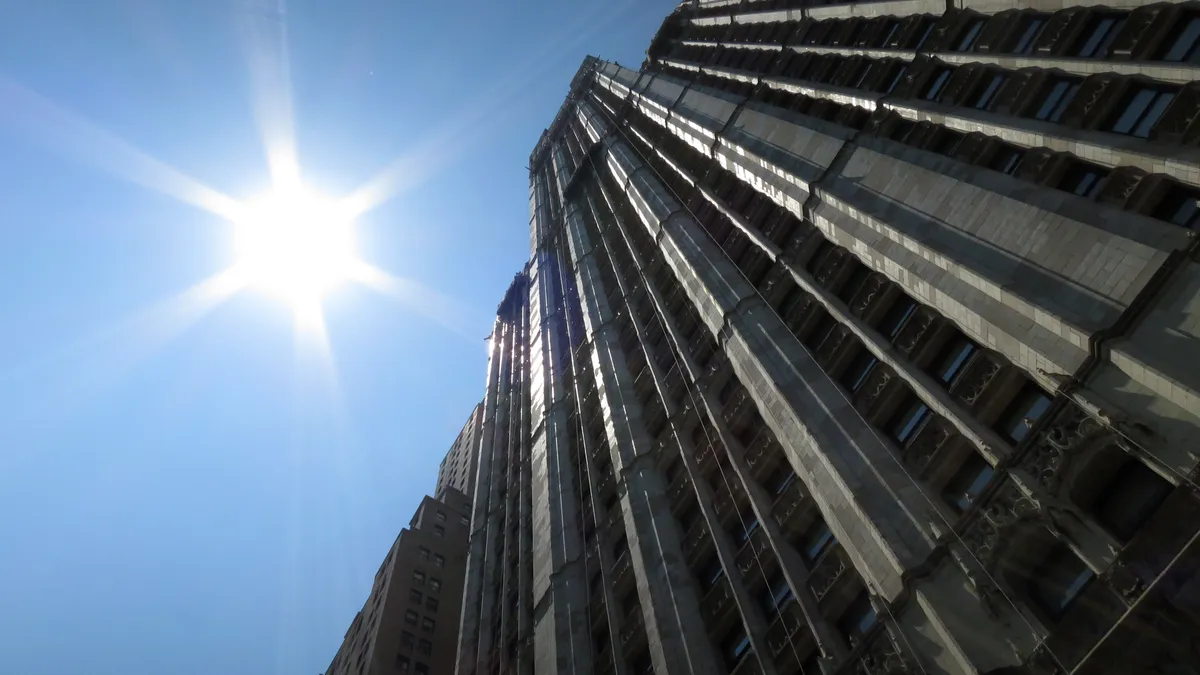Dive Brief:
- Demand for design services inched up for the fourth-consecutive month in May, with the American Institute of Architects' latest Architecture Billings Index coming in at 53.0 for the month, compared to 50.9 in April and 54.3 in March. The ABI is an indicator of future construction spending with a nine- to 12-month lead time.
- Within the index, the institutional sector fell back after four months of growth, registering a score of 51.2 in May. The commercial/industrial sector also dropped off to a mark of 51.2 — though it is still above the breakeven point. The multifamily residential and mixed-practice sectors rebounded for the month, with the multifamily category returning above the breakeven point to 51.3 and the mixed-practice segment jumping to a score of 55.8.
- The sub-index tracking project inquiries rose again in May to a score of 62.4, up from 60.2 in April. Design contracts also inched up, increasing from 53.2 in April to 54.8 in May.
Dive Insight:
Growth in demand for design services picked back up in May after a slight lag in April. The increase comes on the heels of a bump in May's employment figures that saw an increase of 11,000 net new jobs for the month. That employment report came with mixed messages, however, revealing a multimonth low for labor force participation and pointing to a likelihood of continued difficulties for construction companies looking to expand their workforce.
The Trump administration's budget proposal likely catalyzed renewed optimism in the sector, with the plans giving a preliminary overview of the president's $1 trillion infrastructure proposal. According to that budget, the administration would allocate $200 billion to transportation projects over the next 10 years in order to create $1 trillion in new investments for the nation's aging infrastructure.
The administration has said it would meet the $1 trillion mark through its own federal investments, incentives for private sector funding and speeding up projects by rolling back or revising existing regulations. Though the promise of President Donald Trump's plan could drive confidence in the industry and in construction firms' hopes to bid on future work, critics say the proposal could eliminate $206 billion from infrastructure programs and ultimately take away investments from U.S. infrastructure and housing projects.
Despite an uptick in architecture billings in May, the month's deceleration in the commercial/industrial and the institutional segments could signify waning optimism in the administration's ability to push forward with the plan. Uncertainty surrounding the highly touted infrastructure package's lack of concrete details could stand to dampen the industry's overall optimism in the administration and the coming surge in projects it has promised since the campaign trail.













